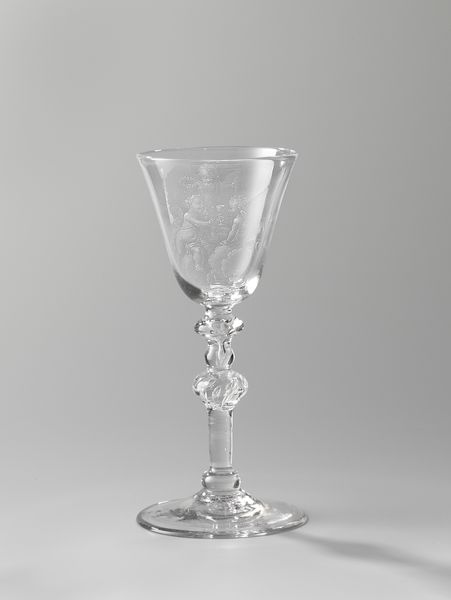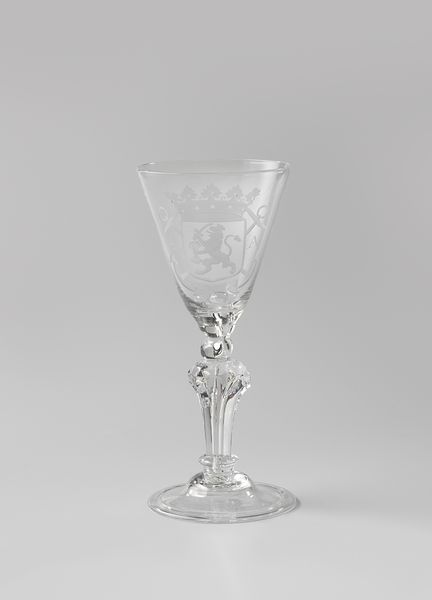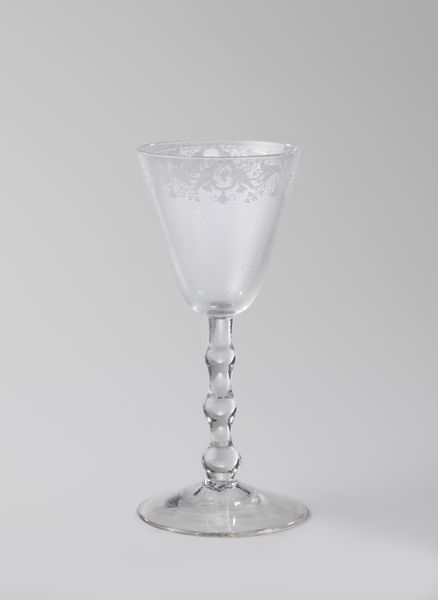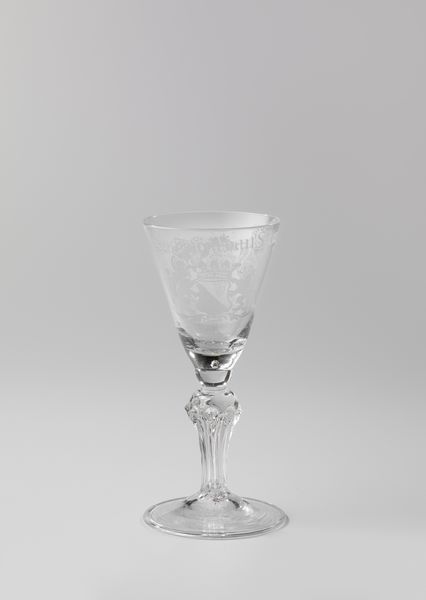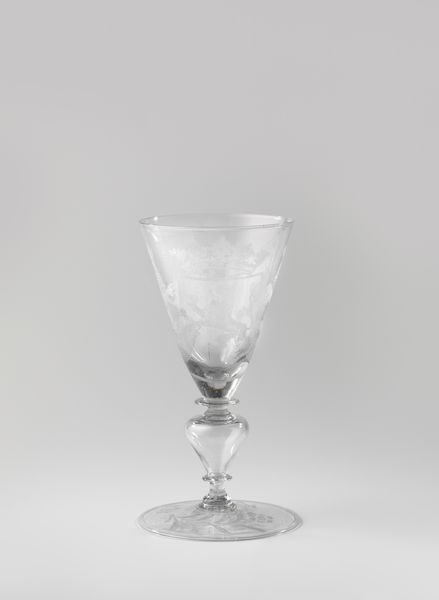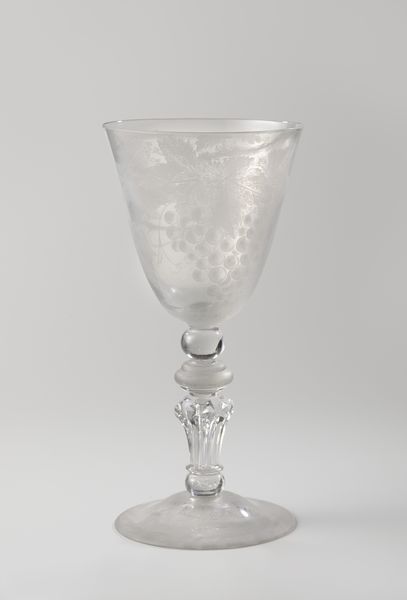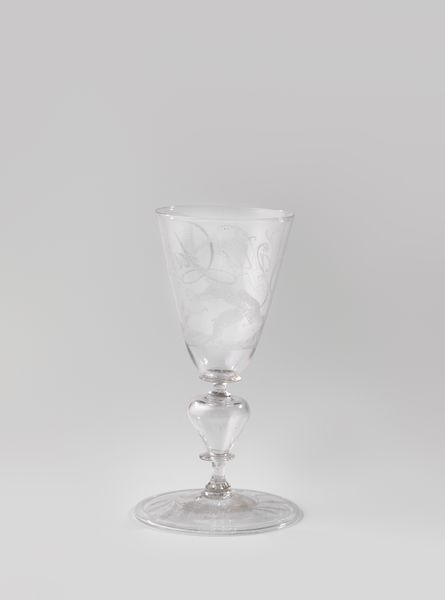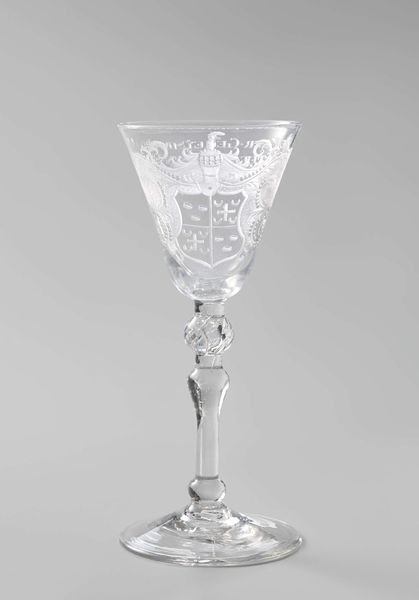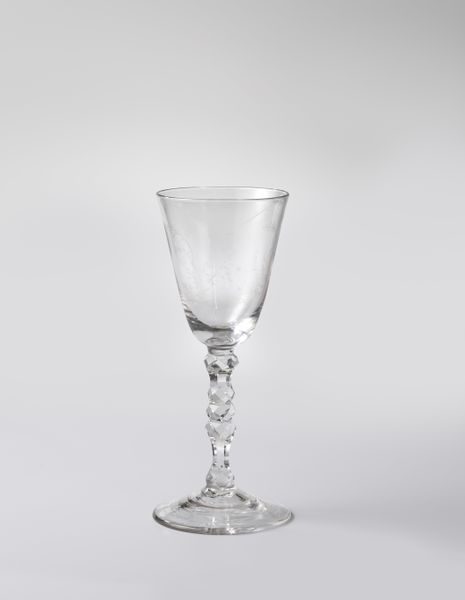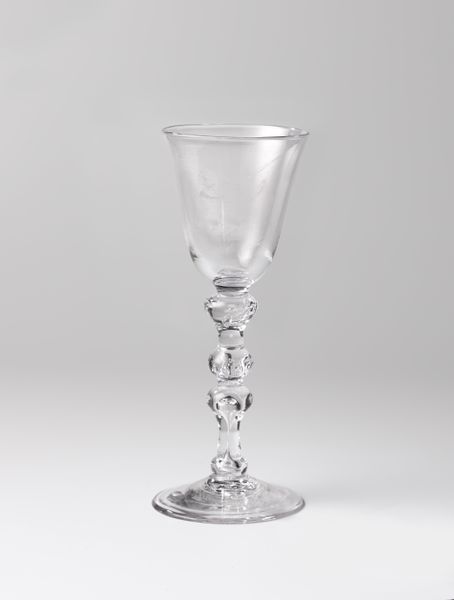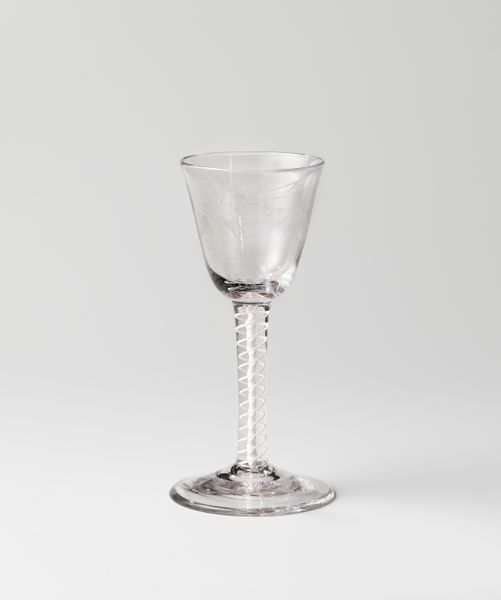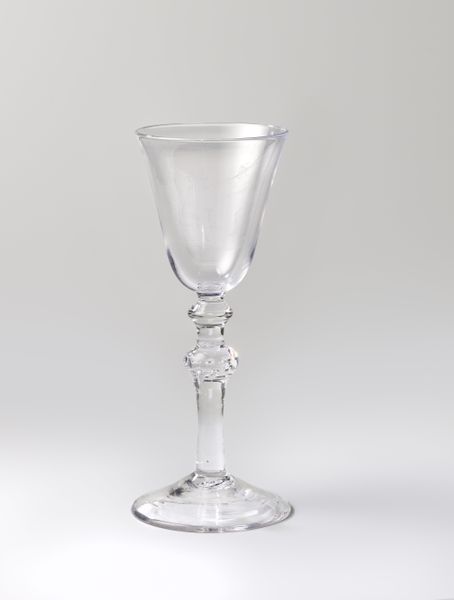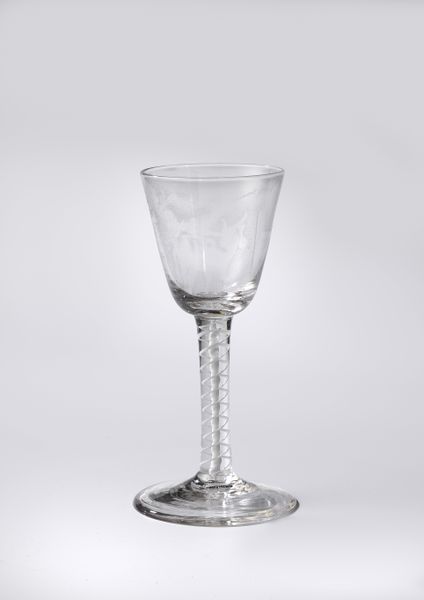
glass
#
baroque
#
glass
Dimensions: height 15.2 cm, diameter 7.2 cm
Copyright: Rijks Museum: Open Domain
Editor: Here we have a baroque “Kelkglas met het wapen van de stad Utrecht,” a glass goblet dating from about 1725 to 1750, made by an anonymous artist. It's delicately engraved. What strikes you about this piece? Curator: Well, it’s fascinating to consider the labor involved in creating something like this. Glassblowing, engraving...each step demanding particular skills, accessible only through training and often associated with specific communities of artisans. Have you considered what the imagery, the city's coat of arms, might tell us about its function and its intended consumer? Editor: Not really, I mostly saw it as pretty craftsmanship! I guess it was intended for someone with a connection to Utrecht and likely affluent enough to afford such detailed work? Curator: Precisely. Think about the material itself: glass, a luxury item at the time. Its transparency and fragility denote status and require careful handling. Then look at the design. Baroque style often implied an excess. But, by depicting the city’s symbol, it blends craft with civic pride and consumption. Do you think it elevates the status of the object or confines its meaning? Editor: That’s a great question... I am thinking of the craftsmanship. It shows incredible skill, transforming something functional into a work of art. Curator: Yes! It challenges this divide between art and craft that has often been artificially enforced. How does knowing the means of production inform how you understand it aesthetically? Editor: I’ll definitely remember that glassblowing and engraving weren't just skills, but specialized labour connected to the consumer of luxury. Thank you. Curator: My pleasure. It’s all about understanding the materiality! And the societal context in which the object came into being.
Comments
No comments
Be the first to comment and join the conversation on the ultimate creative platform.
